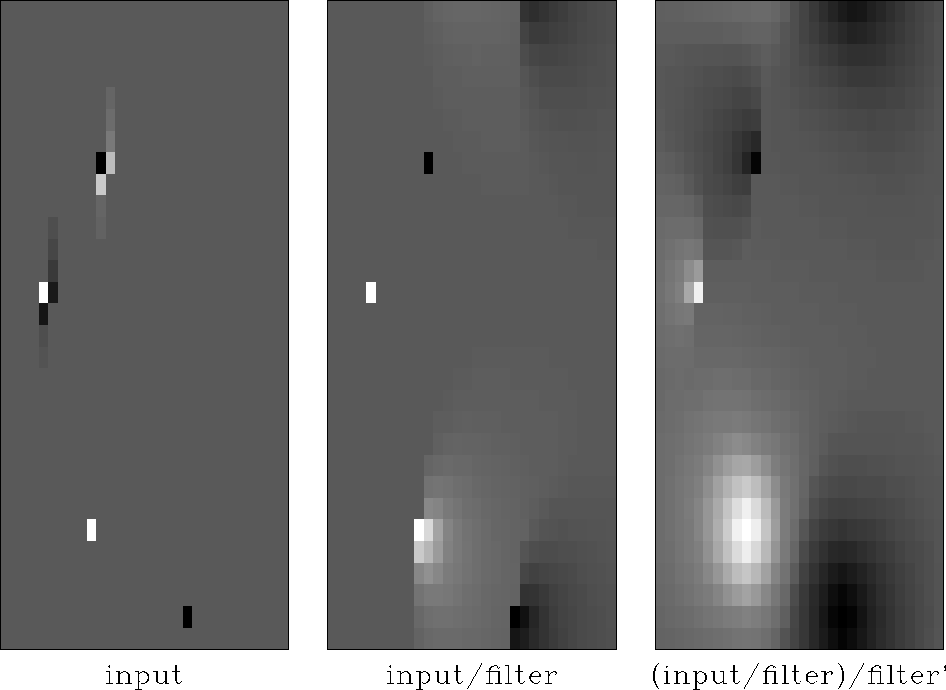




Next: The Helmholtz equation
Up: Rickett & Claerbout: Factoring
Previous: Introduction
As a simple illustration of how helical boundary conditions can lead
to recursive solutions to partial differential equations, we consider
Poisson's equation, which relates potential, u, to source density,
f, through the Laplacian operator:
|  |
(1) |
Poisson's equation crops up in many different branches of physics: for
example, in electrostatics, gravity, fluid dynamics (where the fluids
are incompressible and irrotational), and steady-state temperature
studies. It also serves as a simple analogue to the wave-propagation
equations which provide the main interest of this paper.
To solve Poisson's equation on a regular grid
Claerbout (1997), we can approximate the
Laplacian by a convolution with a small finite-difference filter.
Taking the operator,  , to represent convolution with filter,
d, Poisson's equation becomes
, to represent convolution with filter,
d, Poisson's equation becomes
|  |
(2) |
Although  itself is a multi-dimensional convolution operator
that is not easily invertible, helical boundary
conditions Claerbout (1997) allow us to reduce the
dimensionality of the convolution to an equivalent one-dimensional
filter, which we can factor into the product of a lower-triangular
matrix,
itself is a multi-dimensional convolution operator
that is not easily invertible, helical boundary
conditions Claerbout (1997) allow us to reduce the
dimensionality of the convolution to an equivalent one-dimensional
filter, which we can factor into the product of a lower-triangular
matrix,  , and its transpose,
, and its transpose,  . These triangular
matrices represent causal and anti-causal convolution with a
minimum-phase filter, in the form
. These triangular
matrices represent causal and anti-causal convolution with a
minimum-phase filter, in the form
|  |
(3) |
We can then calculate u directly since  and its transpose
are easily invertible by recursive polynomial division:
and its transpose
are easily invertible by recursive polynomial division:
|  |
(4) |
lapfac
Figure 1
Deconvolution by a filter whose autocorrelation
is the two-dimensional Laplacian operator.
This amounts to solving the Poisson equation.
After Claerbout (1997).










Next: The Helmholtz equation
Up: Rickett & Claerbout: Factoring
Previous: Introduction
Stanford Exploration Project
7/5/1998
![]() , to represent convolution with filter,
d, Poisson's equation becomes
, to represent convolution with filter,
d, Poisson's equation becomes
